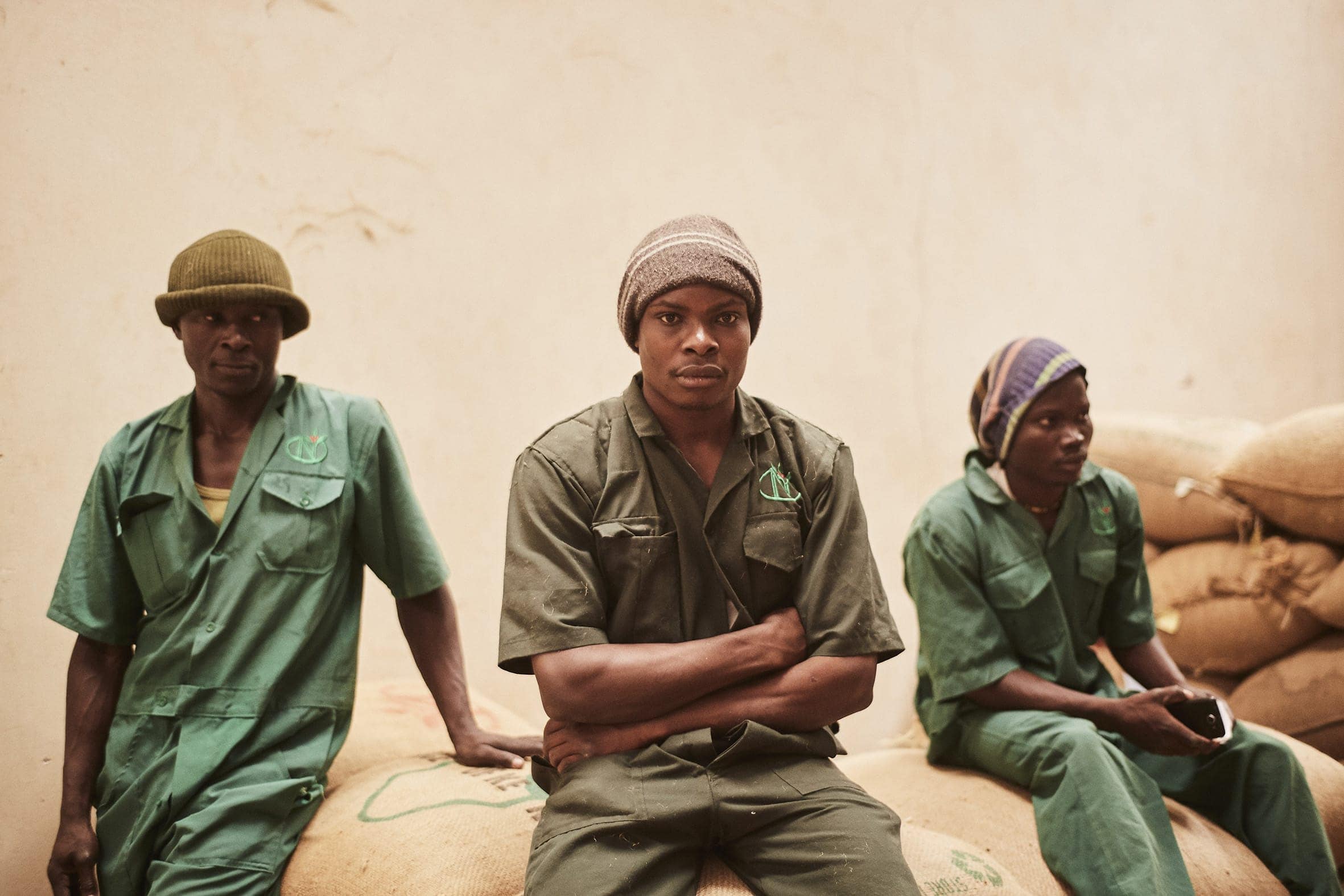

Telling and approachable, the subject Jake reveals is more than just the journey of the brew. At first travelling to Columbia, he realised the amount of hard and thoughtful labour that was behind each cup – from the growing, harvesting, to the picking of coffee cherries, the wet milling, drying and the delivery of it to the West. As such, Jake’s aim is to spread awareness on the topic, and above all, he wants his audience to appreciate the incredible undertaking involved in the process of making coffee.
Jake, tell us about your series Drink my Sweat.
I remember a particular moment very clearly after returning back to London from my first trip – I was sitting in a local café, drinking a coffee from one of the farms that I had visited during my travels, and I had an intense feeling of guilt and shame wash over me. I almost couldn’t drink the coffee. I was so saddened by the difference in reality from the café to the farm. I looked around at everyone and wondered if they even knew what it took to create their cup of coffee. So I decided that perhaps I would produce a book in order to share my observations of coffee in Colombia.
The series can be quite beautiful and romantic at times. I don’t want to sensationalise other people’s lives or misrepresent them, so the pictures focus on a positive and constructive coffee narrative. As a result, I needed the project to at least have a title that would make people think a little bit – specifically about coffee.
Drink My Sweat is certainly not an inviting statement, but it starts to suggest something important – it also comes from the Swahili expression Kunywa Jasho Langu. Some local shops in Kenya have that name and I came to understand it as a welcoming gesture to enjoy their hard work.


Who did you end up meeting and what were they like?
As I spent some time at Iyego Farmers Cooperative in Marimira, I met Bonface. He was quietly and constantly shovelling coffee cherries as they were being relentlessly poured into a huge stone hopper. I took pictures of him whilst he was working and then, in a moment of calm, I climbed into the hopper with him and noticed the hand painted cherry hopper sign on the wall behind.
I introduced myself and then after a while I asked him to look into the lens – this quiet moment of calm captures Bonface as a majestic and respected coffee worker. He doesn’t have a glamorous job, but he radiates distinction. At that moment, the activity surrounding him and I became irrelevant and the photograph became a timeless representation of him and the work that he is doing. His role in the co- operative is small but a vital contribution to the excellence of the coffee that is being produced there.
Is this a reputable job in Kenya? Are there many other alternative jobs?
I only visited one actual coffee roastery in Kenya, as the rest were farms, co-ops, dry mills and the coffee exchange. I think that coffee roasting is probably a very respected job there, as are many of the coffee-related jobs – for example, quality control in the mills and cupping labs. These jobs are specialist and require individuals that are highly skilled in the area of coffee.
Farmers and pickers are quite often local people, with a small area of land on which they grow small harvests of coffee as a cash crop sold to their local co-op. Some farmers will pick coffee on neighbouring farms as well as their own to supplement their income. Unemployment in Kenya overall is approximately 9% and increasing, but the coffee industry is a big provider of jobs in and around Nairobi.

Were there ever any shocking moments or challenges faced while working on this project?
There are two significant challenges faced when visiting a coffee producing country. The first challenge is how to represent each origin, with all the similarities and differences, in an honest and unprejudiced way. The second is how to navigate as a westerner and document ‘otherness’ in photography, with an approach that isn’t predatory and doesn’t commodify the exoticism of the people and places.
And lastly, what advice can you give to a coffee consumer?
My advice to coffee drinkers is to find a good café and support it – buy whole beans directly from a roaster that produces coffee that you enjoy. Think about what it is you are drinking and appreciate where it has come from. Perhaps drink it without milk or sugar, get to know the true flavour of good coffee.

Likewise, it is equally important to have the same awareness and engagement when you consume milk, cheese, sugar, chocolate or anything else for that matter. My projects give coffee drinkers a visual representation of the journey of specialty coffee in that particular country.




